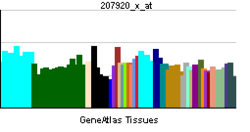ZFX
This article is about the protein. For the flying effects company, see ZFX Inc.
| ZFX | |||||||||||||||||
|---|---|---|---|---|---|---|---|---|---|---|---|---|---|---|---|---|---|
 |
|||||||||||||||||
| Identifiers | |||||||||||||||||
| Aliases | ZFX, ZNF926, zinc finger protein, X-linked | ||||||||||||||||
| External IDs | MGI: 99211 HomoloGene: 2561 GeneCards: ZFX | ||||||||||||||||
| |||||||||||||||||
| RNA expression pattern | |||||||||||||||||
   | |||||||||||||||||
| More reference expression data | |||||||||||||||||
| Orthologs | |||||||||||||||||
| Species | Human | Mouse | |||||||||||||||
| Entrez | |||||||||||||||||
| Ensembl | |||||||||||||||||
| UniProt | |||||||||||||||||
| RefSeq (mRNA) | |||||||||||||||||
| RefSeq (protein) | |||||||||||||||||
| Location (UCSC) | Chr X: 24.15 – 24.22 Mb | Chr X: 94.07 – 94.12 Mb | |||||||||||||||
| PubMed search | [1] | [2] | |||||||||||||||
| Wikidata | |||||||||||||||||
| View/Edit Human | View/Edit Mouse |
Zinc finger X-chromosomal protein is a protein that in humans is encoded by the ZFX gene.[3]
References
Further reading
- North M, Sargent C, O'Brien J, et al. (1991). "Comparison of ZFY and ZFX gene structure and analysis of alternative 3' untranslated regions of ZFY.". Nucleic Acids Res. 19 (10): 2579–86. doi:10.1093/nar/19.10.2579. PMC 328173
 . PMID 2041734.
. PMID 2041734. - Mardon G, Luoh SW, Simpson EM, et al. (1990). "Mouse Zfx protein is similar to Zfy-2: each contains an acidic activating domain and 13 zinc fingers.". Mol. Cell. Biol. 10 (2): 681–8. PMC 360866
 . PMID 2105457.
. PMID 2105457. - Palmer MS, Berta P, Sinclair AH, et al. (1990). "Comparison of human ZFY and ZFX transcripts.". Proc. Natl. Acad. Sci. U.S.A. 87 (5): 1681–5. doi:10.1073/pnas.87.5.1681. PMC 53546
 . PMID 2308929.
. PMID 2308929. - Müller G, Schempp W (1989). "Mapping the human ZFX locus to Xp21.3 by in situ hybridization.". Hum. Genet. 82 (1): 82–4. doi:10.1007/BF00288279. PMID 2497060.
- Schneider-Gädicke A, Beer-Romero P, Brown LG, et al. (1989). "ZFX has a gene structure similar to ZFY, the putative human sex determinant, and escapes X inactivation.". Cell. 57 (7): 1247–58. doi:10.1016/0092-8674(89)90061-5. PMID 2500252.
- Schneider-Gädicke A, Beer-Romero P, Brown LG, et al. (1990). "Putative transcription activator with alternative isoforms encoded by human ZFX gene.". Nature. 342 (6250): 708–11. doi:10.1038/342708a0. PMID 2512506.
- Taylor DM, Ray PF, Ao A, et al. (1998). "Paternal transcripts for glucose-6-phosphate dehydrogenase and adenosine deaminase are first detectable in the human preimplantation embryo at the three- to four-cell stage.". Mol. Reprod. Dev. 48 (4): 442–8. doi:10.1002/(SICI)1098-2795(199712)48:4<442::AID-MRD4>3.0.CO;2-Q. PMID 9364438.
- Murphy WJ, Eizirik E, Johnson WE, et al. (2001). "Molecular phylogenetics and the origins of placental mammals.". Nature. 409 (6820): 614–8. doi:10.1038/35054550. PMID 11214319.
- Agate RJ, Choe M, Arnold AP (2004). "Sex differences in structure and expression of the sex chromosome genes CHD1Z and CHD1W in zebra finches.". Mol. Biol. Evol. 21 (2): 384–96. doi:10.1093/molbev/msh027. PMID 14660691.
- Poloumienko A (2004). "Cloning and comparative analysis of the bovine, porcine, and equine sex chromosome genes ZFX and ZFY.". Genome. 47 (1): 74–83. doi:10.1139/g03-099. PMID 15060604.
- Beausoleil SA, Jedrychowski M, Schwartz D, et al. (2004). "Large-scale characterization of HeLa cell nuclear phosphoproteins.". Proc. Natl. Acad. Sci. U.S.A. 101 (33): 12130–5. doi:10.1073/pnas.0404720101. PMC 514446
 . PMID 15302935.
. PMID 15302935.
This article is issued from Wikipedia - version of the 6/4/2016. The text is available under the Creative Commons Attribution/Share Alike but additional terms may apply for the media files.
